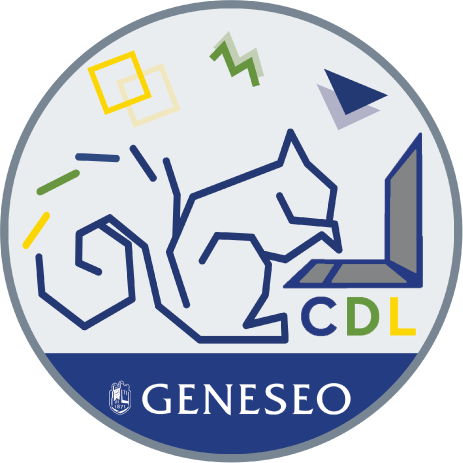My why
14 Aug 2020
 Photo by Morgan Harper Nichols on Unsplash
Photo by Morgan Harper Nichols on Unsplash
Who am I, and how did I get here?
I started at SUNY Geneseo as an undergraduate English major in 2014, and I truly had no idea what I was doing. People would make assumptions about my plans based on my major and, likely out of sheer stubbornness, I would feel compelled to reject each one: No, I’m not going to be an English teacher… No, it’s unlikely I’ll be a famous author, but thanks for asking.</p>
As irritating as these questions were, they were even more so because for a long time I couldn’t come back with anything substantial that I actually could see myself doing with a degree in English.
What people were actually asking me, and what I was asking myself, was, what is my “why”?
I’d actually been admitted to Geneseo as a psychology major, but I had always had English in the back of my head as my real educational aspiration. So, out of hopeful curiosity, during freshman orientation, I attended a brief talk provided by the English department. While Paul Schacht was the Chair of the English department at the time, he was, in usual fashion, pulled in many directions that day, and Rob Doggett, who eventually became the Chair while I was a student, filled in. Rob talked about how the Geneseo English major was working hard to dismantle the stereotype of a solitary white man or woman sitting in a field memorizing stanza upon stanza of poetry and, instead, reframe it as a discipline focused on things like the power of narrative and community, and how to approach those things critically.
At this point, I was approaching my “ah-ha!” moment when Paul walked in long enough to introduce the idea of “digital humanities” and the budding enthusiasm for this field of study at Geneseo. I had never heard anyone talk about combining the soft skill of English study with anything remotely technical; I was always given the impression that if you were good at English, you were inherently bad at anything digital, and proudly labeled myself as technologically inept. Now I’m being told that I don’t have to think that way, and that I can use these additional skills to enhance my approach to the critical analysis and writing that I love? By the time he walked back out the door and Rob resumed administration of the session, I was sold.
When it came time for me to make my schedule for the upcoming fall semester during orientation, I was paired with Caroline Woidat, Professor of English and American Studies Program Coordinator, which I took as my final cosmic nudge, abruptly asking her to change my major before we began, plunging me into a completely different game plan for that session and the rest of my undergraduate career in a manner of minutes.
It took me a year of getting my feet under me as an undergraduate, navigating college life and expectations, before I had my gateway experience into the digital humanities world. During my sophomore year, in Fall 2015, I took Dr. Woidat’s Women and Literature: Politics & Practice of Textual Recovery course. The digital humanities aspect of this course was actually a pleasant surprise to me, as I’d originally planned to take this course to fulfill my 19th century literature requirement for the major. When we began to dive into digital practices in the course, I felt an exhilarating resurgence of that inspiration I felt during orientation.
This course introduced me to a handful of exciting online resources, such as Internet Archive and Just Teach One, but the truly transformational aspect of this course was how it changed the way I thought about texts, narrative, representation, and the opportunities digital tools provide for more extensive, collaborative textual analysis and criticism. This shift in perspective was a crucial turning point in my undergraduate career as I sought out more opportunities to connect with narrative and communities in increasingly digital ways.
By the end of Fall 2017, I was invited to participate in a COPLACDigital course titled The Social Life of Books, a course that required its students to create a WP website exploring a collection of books held in their campus library. My knowledge and understanding of digital tools, techniques, and practices grew explosively and exponentially, resulting in the creation of the Solider Librarian at SUNY Geneseo, my final project that explored the 3 oldest books in Milne Library’s Special Collections, allowing site visitors to explore them in engaging and informational ways. I came away from this course with a stronger understanding of not only critical digital practices, but also of how these practices can impact learning and collaborative criticism.
These experiences helped me land my first job after graduation as the Open Education Resources (OER) Publishing Coordinator for the SUNY OER Services team. The values I learned as a digital humanities student were reinforced by those of the open movement, which is, essentially, to democratize knowledge through low-barrier access and collaborative learning. In this role, I continued to develop my digital skills, tackling command line, HTML, CSS, and more, until I was presented with the opportunity to transition into the role of Digital Humanities and Learning Coordinator at the CDL.
I’ve had a lot of whys along the way, and, given the path here, I’m beyond excited to figure out all the new whys ahead.
Welcome to the ride.
